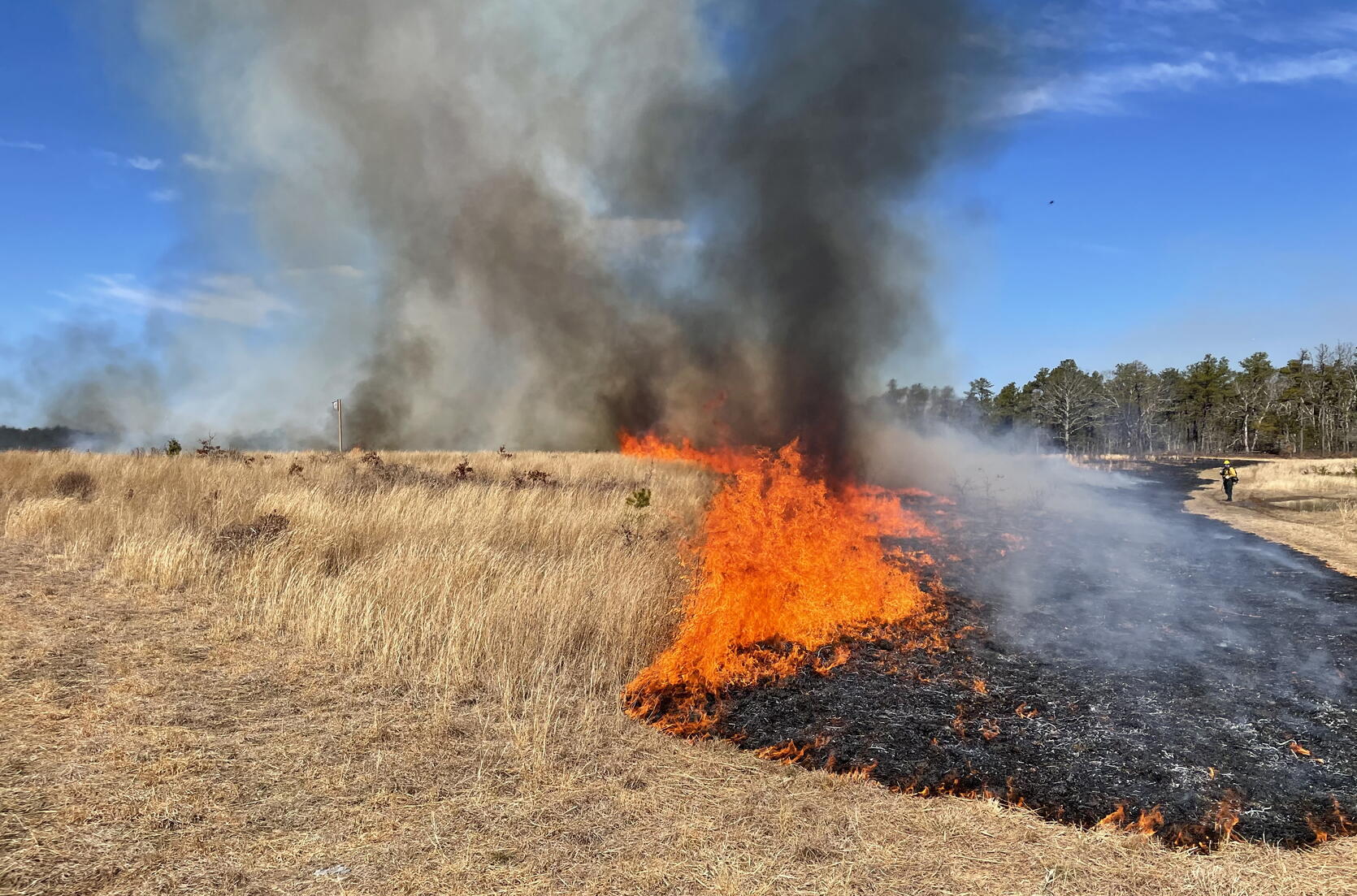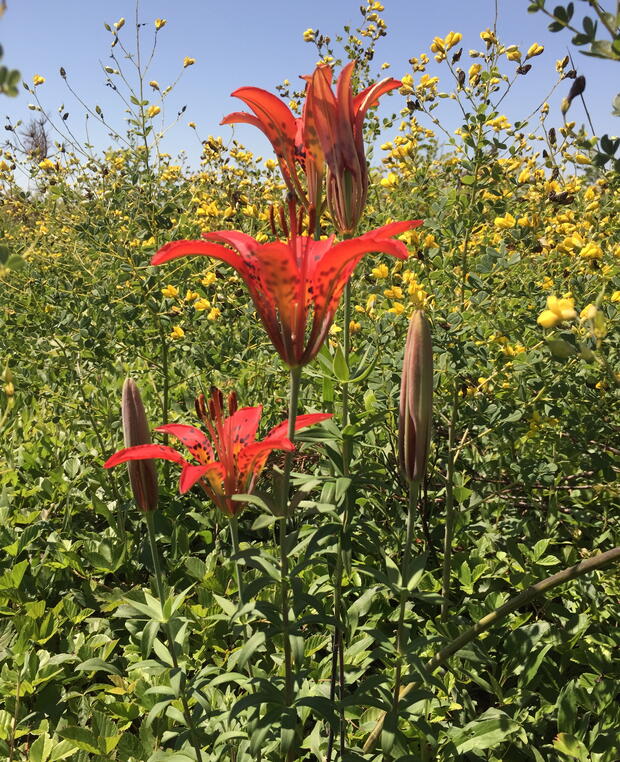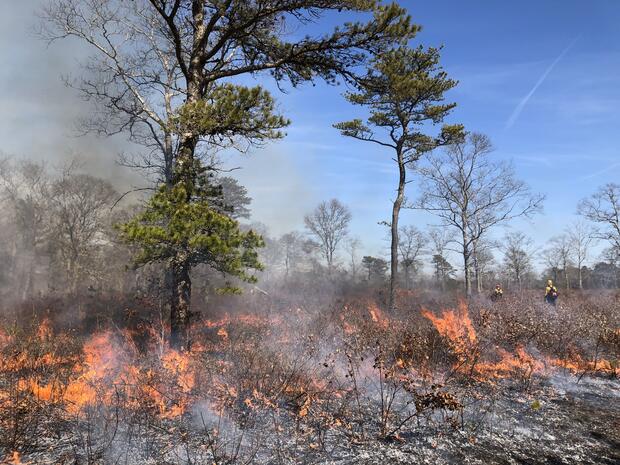- Division of Fisheries and Wildlife
Media Contact
Marion Larson, MassWildlife

MassWildlife kicked off the 2021 prescribed fire season by conducting two successful prescribed burns, totaling 55 acres, at Frances Crane Wildlife Management Area (WMA) in March (pictured above) and a 68-acre burn on Penikese Island in early April. These fires are designed to maintain pitch pine oak woodland, shrubland, and sandplain grassland habitats. Many plants found at Frances Crane WMA have developed adaptations to fire, including orange milkweed, wood lily, scrub oak, and wild yellow indigo—the host plant of the declining frosted elfin butterfly.
While mechanical forms of habitat management—like mowing and tree thinning—are important tools, they cannot fully substitute for fire when it comes to restoring and maintaining special habitats like barrens. Barrens can be grasslands, shrublands, or woodlands, but all barrens share common soil and climatic characteristics. Additionally, all barrens need periodic disturbance and occasional fires to thrive. Numerous wildlife species benefit from MassWildlife’s habitat management activities including American woodcock, eastern whip-poor-will, grasshopper sparrow, buck moth, sandplain gerardia, and many others.
Prescribed fire is essential for maintaining and restoring native grasslands. Fire recycles nutrients tied up in old plant growth, controls woody plant encroachment, and stimulates germination and growth of many uncommon and rare fire-adapted plants. Fire promotes growth of warm season grasses such as little bluestem and Indian grass and re-invigorates grassland habitats that support more than 150 species of diminishing wildlife and plants. Prescribed fire also helps reduce the build-up of woody plant materials and debris and reduces the risk of large wildfires. Fire can also be used to manage and restore oak woodlands by reducing growth of red maple and white pine to allow more sunlight for germination and growth of oak species that are an important food source for many kinds of wildlife.
As in recent years, MassWildlife has a busy prescribed fire season planned and will target grasslands, heathlands, inland barrens, oak woodlands, oak hickory forests, marshes, fens, and wet meadows that are influenced by fire and important for wildlife. Many elements are needed in order for a prescribed fire to take place including an experienced crew, a qualified prescribed burn boss, specialized tools, an authorized prescribed fire plan, permits, and the list goes on and on! With safety as a top priority, fire program managers carefully prepare well before the season begins.
MassWildlife works with other agencies and organizations to carry out prescribed fires. By sharing resources and expertise, this partnership allows us to work toward the mutual goal of building a more resilient landscape and improving the quality of life in neighboring communities. Many thanks to our partners at DCR Bureau of Forest Fire Control, NPS Cape Cod National Seashore, US Fish and Wildlife Service, the Buzzards Bay Coalition, and local fire departments in helping us get off to a good start this year.


